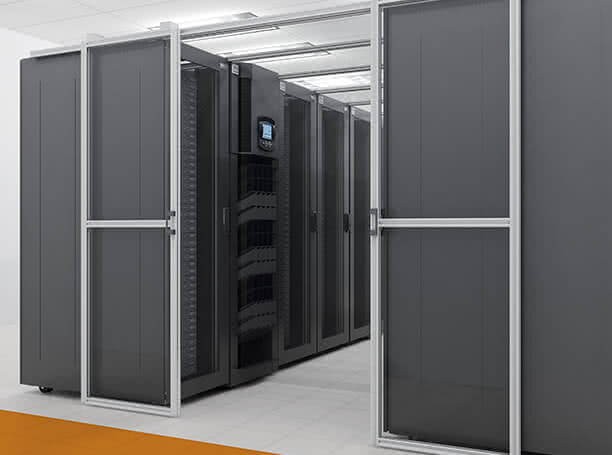Increasingly data-driven workloads, including artificial intelligence (AI) and other high performance compute, are driving increased density of the processing and storage capacity in data center racks. According to a survey by the Uptime Institute more than a third of data center operators worldwide have reported a rapid increase in rack densities over the past three years.
The same report adds that nearly half of these facilities with capacities of 10 MW or more report rack densities above 20 kW, with 20% claiming to have racks exceeding 40 kW.
As rack densities increase, cooling and power consumption challenges also grow. New cooling designs are required to maintain optimal performance and prevent issues related to the heat generated by servers.
The liquid cooling revolution
While liquid cooling is not a new concept, the rapid increase in high density compute is driving adoption as these liquid-cooled solutions provide a more efficient cooling method than traditional air cooled systems..
According to Vertiv, liquid cooling harnesses the superior thermal transfer properties of water and other fluids to enable efficient and cost-effective cooling of high-density racks. It has been found to be up to 3,000 times more effective than traditional air-cooling methods.
Data Center Dynamics describes liquid cooling as “as roadmap for continued success” for high rack density cooling, and the most viable solution being to bring liquid cooling to the rack. Liquid cooling harnesses the higher thermal transfer properties of refrigerants or other fluids to support efficient and cost-effective cooling of high-density racks.
The future of cooling in data centers
Although liquid cooling is not a new technology, the first wave of successful, efficient, and problem-free implementations in high-density environments has provided the proof that will drive the adoption of this technology for the remainder of the year, according to Vertiv’s trend forecast for 2023.
In the Latin American context, where the cost and availability of energy can be challenging, finding cost-effective and energy-efficient cooling solutions becomes even more critical.
In this case, liquid cooling presents itself as an attractive option as it can deliver higher cooling performance using less energy compared to traditional air-cooling systems. Additionally, it harnesses the higher thermal transfer properties of water or other fluids to support efficient and cost-effective cooling of high-density racks.
Among the types of liquid cooling are:
-
Direct-to-chip liquid cooling: This technology allows for greater contact with the heat-generating parts of the server and, therefore, better temperature management. Direct-to-chip cold plates sit on top of the heat-generating components of the IT equipment to extract heat through either single-phase cold plates or two-phase evaporative units.
-
Immersion liquid cooling: This technique bathes the servers and other components in a tank of dielectric liquid or thermally conductive dielectric fluid. The liquid efficiently dissipates the heat produced by the electronic components. Through the use of coolant distribution units, the heat is transferred through the facility and externally to facilitate heat rejection.
-
Rear door heat exchangers: Passive or active heat exchangers are systems that replace the rear door of the IT equipment rack with a liquid heat exchanger. They can work in conjunction with air cooling, as they reduce the return air temperature existing the rear of the rack and improve cooling capacity in environments with mixed rack densities.
At Vertiv, we take a holistic approach to liquid cooling and provide a portfolio of solutions that includes refrigerant distribution units (CDUs), indoor chillers designed to provide comprehensive liquid cooling infrastructure solutions for data centers, innovative and efficient immersion cooling systems, liquid cooling CDUs, among others. Learn more here.

This article was developed through a partnership between Ingenium and Vertiv aimed at complementing their technologies and expertise to provide alternatives that facilitate the growth and expansion of critical mission centers, particularly regarding rack density in Latin America.




